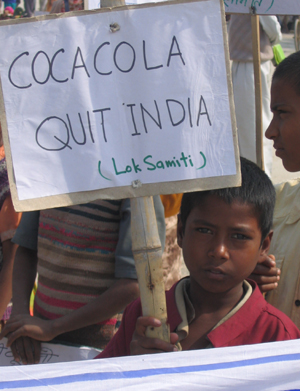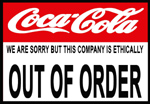Here is a list of common household products that contain known carcinogens and/or neurotoxins.
It could be overwhelming if you didn't have a ready, easy, safe, affordable alternative. I do and I am ready to
share that info with anyone who asks! We have to help each other, you know?
Carcinogens are chemicals that cause cancer. Neurotoxins are chemicals that adversely affect the nervous system reducing emotional well being, mental alertness, coordination and other functions associated with intelligence.
· Lysol disinfectant
· Renuzit Air Deodorizer
· Fantastik All-Purpose Cleaner
· Formula 409
· Pine-Sol Multi-Action Spray
· Pledge Household Cleaner
· Spic & Span Cleaner
· Scotts Liquid Gold
· Lemon Pledge
· Tilex Soap Scum Remover
· Ajax Cleaner
· Gillette Foamy Skin Conditioning
· Speed Stick
· Secret Deodorant
· Johnson's Baby Shampoo · S.O.S. Ammonia Glass Cleaner
· Dawn Sureshot
· Joy Dishwashing Liquid
· Windex Glass Cleaner
· Palmolive Dishwashing Liquid
· Shout Aerosol & Stick
· Sunlight Dishwashing Liquid
· Spray & Wash Stain Remover
· Behold Furniture Wax
· Depend-o Blue Toilet Cleaner
· Endust
· 3M Aerosol Spot Remover
· Formby's Lemon & Almond Spray
· Most Home & Garden Pesticides · Right Guard Deodorant
· Ponds Dry Skin Bar
· Palmolive Skin Bar
· Lady Speed Stick
· Lever 2000
· Irish Spring Deodorant
· Jergens Liquid Soap
· English Leather
· Deodorant
· Ban Roll-on
· Caress Body Bar
· Camay
· Ultra Brite Toothpaste
· Crest Tartar Control
· Listerine Original & Cool Mint
· Arm & Hammer Toothpaste
· Colgate toothpaste
· Scope Mouthwash
· Old English Furniture Spray
· Dove Soap Bars
Begin by thinking of your home as a toxic waste dump. The average home today contains 62 toxic chemicals — more than a chemistry lab at the turn of the century. More than 72,000 synthetic chemicals have been produced since WW II. Less than 2% of synthetic chemicals have been tested for toxicity, mutagenic and carcinogenic effects, or birth defects.. The majority of chemicals have never been tested for long-term effects.
In the work place, Material Safety Data Sheets (MSDS) must accompany any product used. The work place and the outdoors are considered “legal environments” while the air in homes is not. So regulations for outdoor air pollution and toxins in the workplace are much more strict than in the home.
Air Quality Inside Your Home
- · An EPA survey concluded that indoor air was 3 to 70 times more polluted than outdoor air.
- · Another EPA study stated that the toxic chemicals in household cleaners are 3 times more likely to cause cancer than outdoor air.
- · CMHC reports that houses today are so energy efficient that "out-gassing" of chemicals has no where to go, so it builds up inside the home.
- · We spend 90% of our time indoors, and 65% of that time at home. Moms, infants and the elderly spend 90% of their time in the home.
- · National Cancer Association released results of a 15-year study concluding that women who work in the home are at a 54% higher risk of developing cancer than women who work outside the home.
- · Chemicals get into our body through inhalation, ingestion and absorption. We breathe 10 to 20 thousand liters of air per day.
Health Effects of Chemical Exposure
Chemical exposure presents a real danger to you and your family's health and well-being.
- · Cancer rates have almost doubled since 1960.
- · Cancer is the Number ONE cause of death for children.
- · There has been a 26% increase in breast cancer since 1982. Breast cancer is the Number ONE killer of women between the ages of 35 and 54. Primary suspects are laundry detergents, household cleaners and pesticides.
- · Since 1980, asthma has increased by 600%. The Canadian Lung Association and the Asthma Society of Canada identify common household cleaners and cosmetics as triggers.
- · ADD/ADHD are epidemic in schools today. Behavioral problems have long been linked to exposure to toxic chemicals and molds.
- · Chemicals are attracted to, and stored in fatty tissue. The brain is a prime target for these destructive organics because of its high fat content and very rich blood supply.
- · Chemical and environmental sensitivities are known to cause all types of headaches.
- · Fibromyalgia, chronic fatigue syndrome, arthritis, lupus, multiple sclerosis, circulatory disorders, Alzheimer's, Parkinson's disease, irritable bowel syndrome, depression, and hormonal problems are diseases commonly related to chemical exposure.
- · The National Institute of Occupational Safety and Health has found more than 2500 chemicals in cosmetics that are toxic, cause tumors, reproductive complications, biological mutations and skin and eye irritations.
Chemicals in Household Products
There are more than 3 million poisonings every year. Household cleaners are the Number ONE cause of poisoning of children. The top three culprits according to Poison Control: Household cleaners, bleach and medications.
Formaldehyde is one of the largest indoor pollutants in our homes.
Symptoms caused by formaldehyde are allergies, cancer, immune system failings, and asthma.
Products containing Formaldehyde include: antiperspirants , mouthwash, toothpaste, Tupperware, permanent press clothing, floor waxes, furniture polishes, shampoos, cleaners, and cosmetics, just to name a few.
Phenols are a major indoor pollutant. Phenols are absorbed by lungs, and skin. Symptoms include caustic burns, kidney and liver damage and hyperactivity.
Do you think the major products are safe? WRONG!
- Lysol© is even more dangerous than we thought. It contained phenols and dioxin (Agent Orange).
- Bleach must be safe because people have been using it for years, right? WRONG! When using bleach, antiseptics or chlorine in industrial areas, OSHA requires you to wear impervious protective clothing, hard hats, boots, gloves, apron or coveralls, chemical goggles or full face shield and use only in well ventilated areas. There has been a call from the U.S./ Canadian Commission to ban bleach in North America. Bleach is being linked to the rising rates of breast cancer in women, reproductive problems in men and learning and behavioral problems in children.
NTAs were banned in 1970. Lobbying by Proctor & Gamble in 1980 put them back into home products although they are extremely cancer causing. What are they for? ONLY to make more suds in detergents to make you think your clothes are getting cleaner.
In the USA the #1 cause of accidental poisoning is Dawn Dishwashing Detergent©. WHY? Because it is the #1 seller. Tide contains Lye and is the #1 polluter. It is also the #1 seller.
Deep Woods and Off have an ingredient called DEET. DEET causes seizures in children and adults.
. . . . . . . and so you can see why I don't use any of these!










 Worth the read:
Worth the read:












